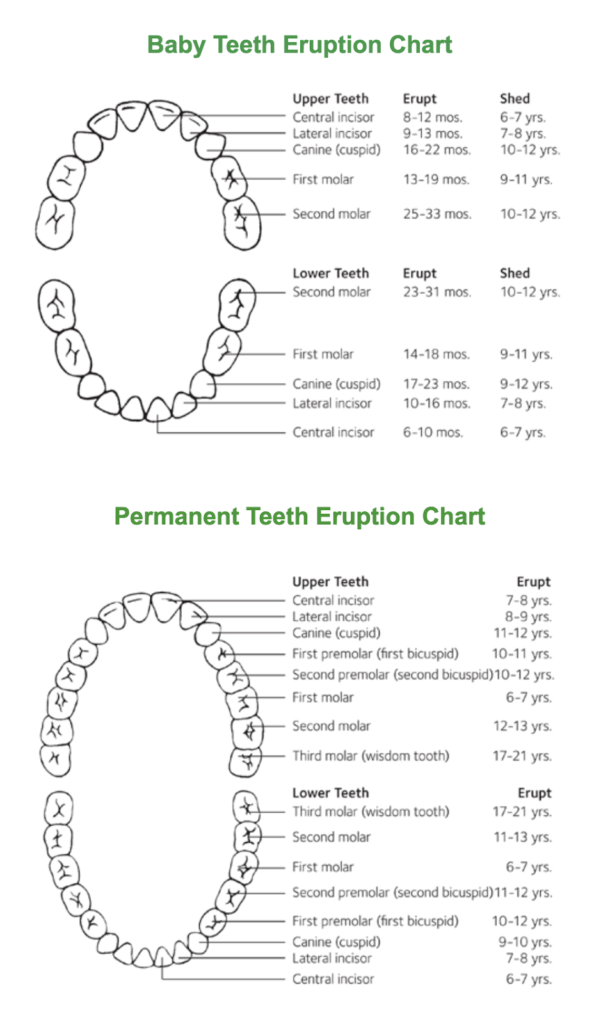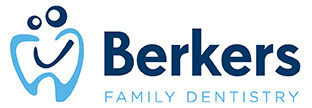Tooth Eruption: Why do we lose baby teeth?
Few things are as adorable as a bright-eyed, smiling youngster who is missing their two front teeth! The joy a child experiences when losing their first teeth is something parents remember and hang on to all their lives. Watching them run up to family and friends to show them the big gap in their grins is heartwarming! And let’s not forget the exciting visits from the Tooth Fairy! But, after the excitement has faded, what’s next? Permanent teeth that will last the rest of their lifetime (if cared for properly).
As dental professionals, we know all the facts and figures associated with permanent teeth and the process of them coming in (known as tooth eruption). But, do you? We’ve decided to share with you some of the details about our permanent teeth, as well as a great teeth chart for you to learn more!
How many teeth do we have?
Our primary teeth, more commonly known as baby teeth, begin showing right around 6 months after birth and continue coming in until age 2 or 3. As any parent knows, baby teeth eruption can be a painful process, leaving parents to deal with irritability and many sleepless nights. We are born with 20 primary teeth, and though it may feel like a lifetime for some parents, eventually they all push through to the surface. The process of replacing our baby teeth with our permanent teeth begins at around age 5. Children will lose their baby teeth and gain primary teeth until young adulthood when their wisdom teeth will come in. When the whole process is complete, a child will go from having 20 primary teeth to 32 permanent adult teeth.
Despite the inevitable shedding of those baby teeth, they have a few super important jobs to do! Besides the obvious benefit of helping children chew, eat their food, and speak, baby teeth also serve as a space holder for the permanent teeth prior to coming in. The muscles in our jaw and the growth and formation of the jaw bones depend on our primary teeth to maintain proper spacing. Baby teeth provide guides for the eruption pathway of our permanent teeth too!
When do permanent teeth come in?
In general, a child’s permanent teeth will erupt in the same order that their primary teeth came in. As the chart displays, this typically takes place when they are age 6 or 7, but can occur sooner or later depending on a child’s development. Most little ones will sprout their central incisors first, better known as their two front teeth. The bottoms generally come in before the tops.
The next up is the four lateral incisors, the teeth between the front teeth and canines; followed by the four canine teeth; and lastly the eight molars. Two of the eight molars will erupt from the gums, without actually replacing any baby teeth.
Wisdom teeth are the last to arrive. However, wisdom teeth do not always erupt, but if they do, it is usually in early adulthood, between ages 17-21. For some, it’s not necessary to remove wisdom teeth if they are correctly positioned in your mouth. For others, they may cause teeth crowding, pain, or become impacted as they push through, and removal is generally recommended. Dr. Berkers and staff will be able to make recommendations about cleaning them properly and whether or not they should be removed.
Establishing a good oral hygiene routine is critical at a young age to help a child prepare for when their permanent teeth arrive. It’s more important than ever to ensure a healthy, happy smile for the rest of their life! If you have questions about your child’s oral health or are interested in scheduling an appointment for a cleaning or oral check-up, contact us at Berkers Family Dentistry!

Care For Your Smile



Leave a Reply